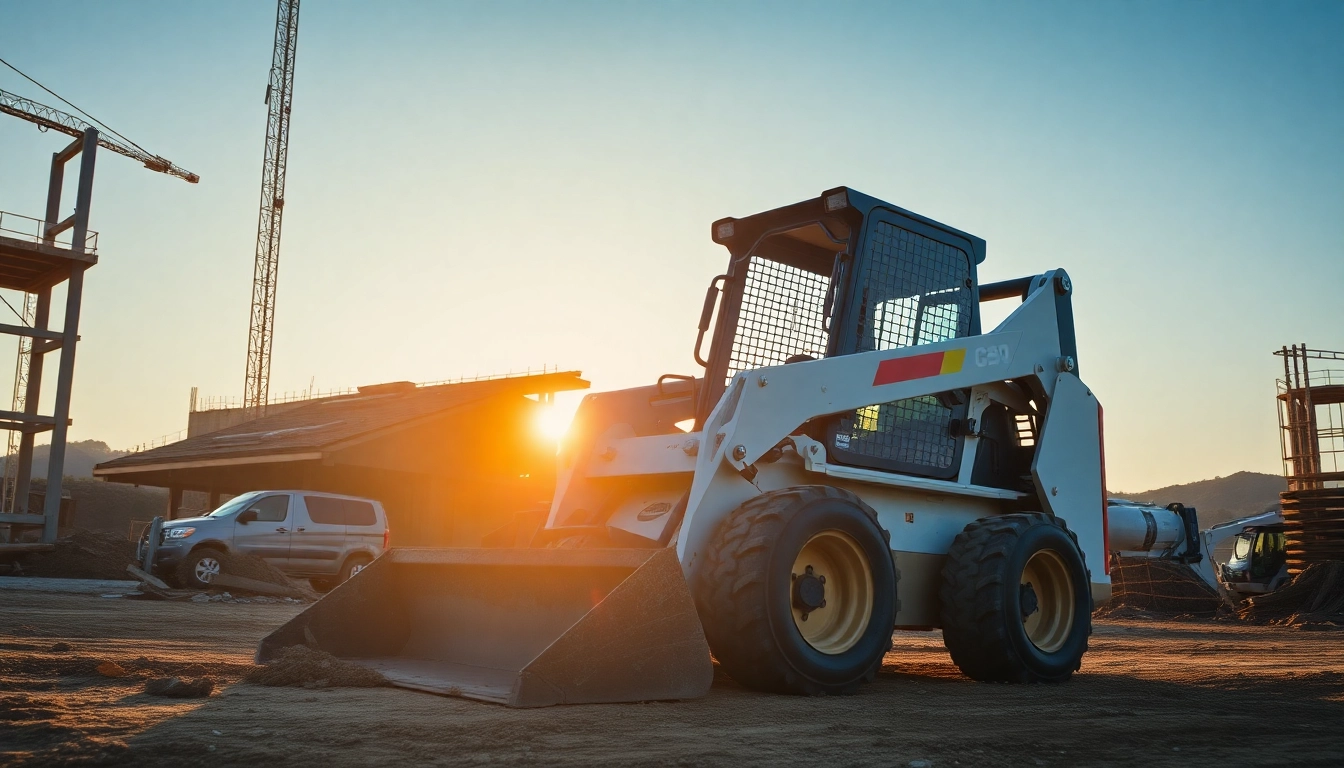Understanding Skid Steer Loans
Skid steers are compact, versatile pieces of machinery that can be used for a variety of construction and landscaping tasks. They’re an essential investment for contractors, landscapers, and even individuals looking to handle large landscaping projects or move earth efficiently. However, acquiring a skid steer can be expensive, which is where financing comes into play. A skid steer loan enables buyers to purchase this equipment without having to pay the full upfront cost. This article will delve into the intricacies of skid steer loans, offering insights into types of financing, eligibility, loan calculations, lenders, and application processes.
What is a Skid Steer Loan?
A skid steer loan is a financing option that allows individuals or businesses to purchase skid steer equipment. The loan covers the purchase price of the skid steer, enabling the borrower to manage the cost through a series of scheduled payments. These loans can be secured or unsecured, with the former often involving the equipment itself as collateral. This means that if the borrower defaults on the loan, the lender has a right to reclaim the skid steer.
Types of Skid Steer Financing
There are several financing options available for acquiring a skid steer:
- Traditional Loans: These are loans from banks or credit unions that often come with fixed interest rates and set repayment periods. They require a good credit score and detailed financial documentation.
- Equipment Financing: This type of loan specifically targets the purchase of equipment. The loan amount is generally based on the equipment’s value, making it easier for lenders to approve financing.
- Leasing Options: Leasing allows users to use a skid steer for a specified period while making monthly payments without owning it outright. At the end of the lease, individuals may have an option to purchase the equipment.
- Personal Loans: These loans can be used for any purpose, including purchasing a skid steer, and don’t require collateral. However, they may come with higher interest rates compared to secured loans.
Key Benefits of Financing a Skid Steer
Financing a skid steer offers several advantages, including:
- Cash Flow Management: Financing allows you to preserve your cash flow by breaking down the total cost into manageable monthly payments.
- Access to Newer Models: With financing, you can often afford a newer or more advanced model that may better suit your needs.
- Tax Deductions: In many cases, the interest on the financing may be tax-deductible for businesses, providing potential tax savings.
- Minimal Upfront Costs: Many financing options require little to no down payment, allowing immediate use of the equipment.
Eligibility Requirements for a Skid Steer Loan
Understanding the eligibility criteria is crucial for anyone looking to secure a skid steer loan. Lenders typically assess several factors to determine whether the loan will be approved.
Credit Score Considerations
Your credit score plays a significant role in the loan approval process. Generally, a credit score of 650 or higher is considered good for obtaining financing. However, some lenders may work with applicants with lower scores, especially if they can demonstrate the ability to repay the loan through income generated by the skid steer.
Business vs. Personal Financing
Business owners looking to purchase a skid steer will generally have different requirements compared to individuals financing for personal use. Business loans may require additional documentation, such as business plans, profit and loss statements, and tax returns. Personal financing might focus more on individual creditworthiness and income verification.
Common Documentation Needed
When applying for a skid steer loan, borrowers should be prepared to submit various documentation, including:
- Proof of Identity (e.g., driver’s license)
- Credit history report
- Financial statements (for businesses)
- Proof of income (pay stubs or tax returns)
- Business registration documents (for business loans)
Calculating Your Skid Steer Loan Amount
Before applying for financing, it’s important to determine how much you need to borrow. This will help you avoid overextending your budget and ensure you choose the right loan type.
Assessing Your Budget and Needs
Begin by evaluating your budget to identify how much you can comfortably afford to spend on a skid steer. Consider other associated costs, including maintenance, insurance, and operation expenses. Having a clear budget will enable lenders to provide appropriate financing options.
The Role of Interest Rates in Financing
Interest rates impact the overall cost of a skid steer loan. Rates can vary widely based on your credit score, the financing term, and the lender. A lower interest rate will decrease the total amount payable over the life of the loan, making it essential to shop around for the best rate before committing.
Monthly Payment Calculators
Many financial institutions provide online calculators to help potential borrowers estimate their monthly payments based on the loan amount, interest rate, and loan term. Utilizing these calculators can give you a clearer picture of what to expect financially.
Choosing the Right Lender for Your Skid Steer Loan
Finding the right lender is crucial to securing favorable loan terms and conditions. Here are several factors to consider when evaluating potential lenders.
Comparing Loan Offers
It’s wise to compare offers from multiple lenders. Look for variations in interest rates, loan terms, and down payment requirements. Utilize pre-qualification options when available, as this won’t impact your credit score and will provide an overview of potential loan amounts and rates.
Reputation and Reviews of Financing Companies
Research lenders’ reputations by reading reviews online and looking for testimonials from previous clients. Reliable lenders typically have positive feedback regarding their customer service, transparency, and responsiveness.
Understanding Terms and Conditions
Carefully review the terms and conditions of the loan. Pay attention to any hidden fees, penalties for early repayment, and what happens if you default on the loan. Make sure you fully understand all aspects before signing any agreement.
Finalizing Your Skid Steer Loan Application
Once you’ve selected a lender and gathered your documentation, it’s time to finalize your loan application. This process involves several steps to ensure a smooth approval.
Preparing Your Application
Create a comprehensive application that clearly outlines your financial position, the purpose of the loan, and how you intend to use the skid steer. Be thorough and honest in your application to avoid complications.
Tips for a Successful Approval
To increase your chances of loan approval:
- Maintain a good credit score by paying off existing debts on time.
- Provide accurate and complete financial documentation.
- Consider making a larger down payment to reduce the loan amount.
- Be prepared to demonstrate how the skid steer will enhance your operations and revenue potential.
Managing Your Skid Steer Financing After Securing a Loan
Following the approval and acquisition of your skid steer, it’s crucial to manage your financing responsibly. Keep detailed records of all payments, set reminders for payment due dates, and review your financial situation regularly to ensure you remain within budget. Additionally, consider the potential productivity benefits of your new equipment and maximize its use to generate revenue that can offset financing costs.
In conclusion, acquiring a skid steer through financing is an accessible option for many individuals and businesses. By understanding the types of loans available, meeting eligibility requirements, calculating potential costs, and choosing the right lender, you can secure a skid steer that meets your operational needs while managing the financial implications responsibly.



